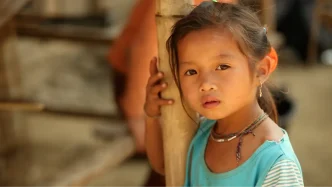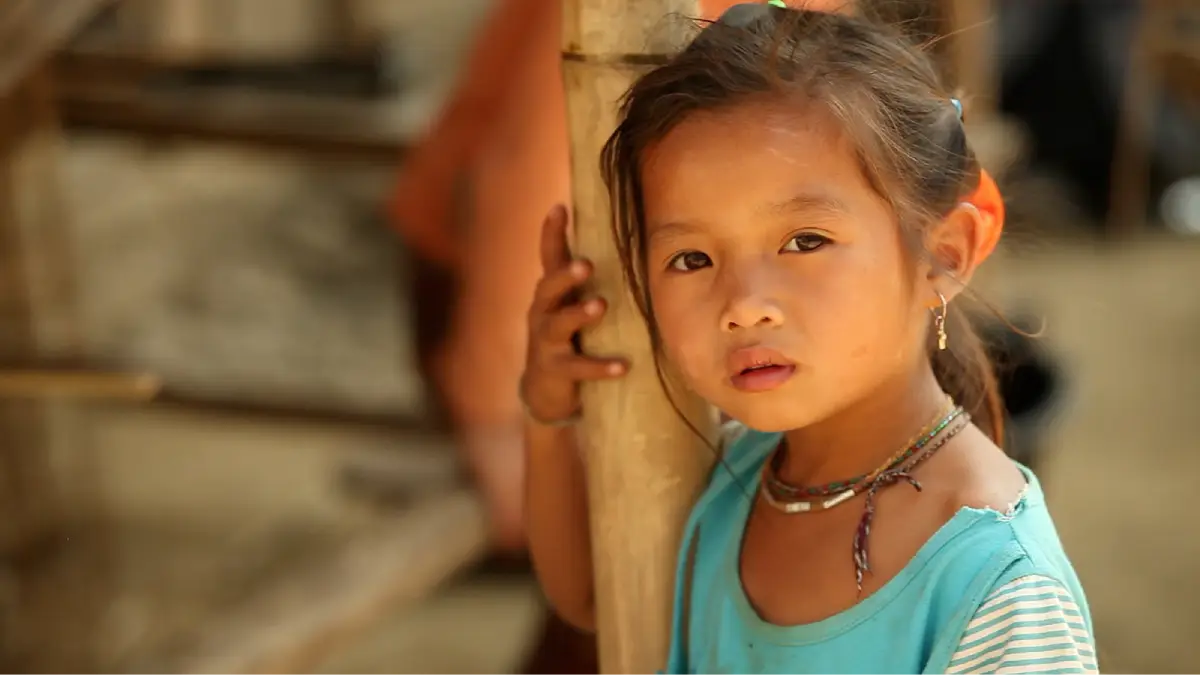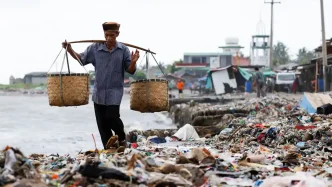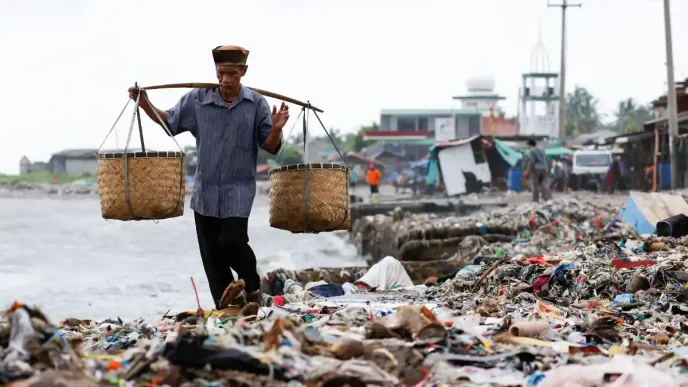In a determined push to safeguard its future generations, the Lao government has reaffirmed its commitment to reducing child stunting by 25 percent by 2030. This pledge, made during a high-level meeting of the National Nutrition Committee in Vientiane, underscores a broader mission to improve public health and lay stronger foundations for national development. With nearly 2 million people, predominantly women and children, grappling with under-nutrition across the country, the stakes could not be higher.
A Persistent Crisis of Nutrition
The scale of the challenge facing Laos is stark. According to the latest Lao Social Indicator Survey, stunting affects around 44 percent of children under five, impacting approximately 385,000 young lives. Chronic malnutrition is equally alarming, with 35.6 percent of children in the same age group showing signs of long-term undernourishment. Most concerning is the rapid onset of these conditions—20 percent of children are already stunted by the age of six months, a critical window for physical and cognitive development.
These figures are not mere statistics; they represent a profound barrier to the country’s progress. Malnutrition in early childhood can lead to irreversible damage, including impaired brain development, reduced learning capacity, and increased susceptibility to disease. For a nation striving to advance under its 9th five-year National Socio-Economic Development Plan, addressing this crisis is not just a health priority but a developmental imperative.
Government Action and Strategic Planning
The recent meeting at the Prime Minister’s Office, chaired by Deputy Prime Minister and National Nutrition Committee Chairman Professor Dr Kikeo Khaykhamphithoune, marked a significant step forward. Building on discussions from the 10th National Nutrition Meeting and prior committee sessions, leaders reviewed progress for the first half of 2025 and outlined plans for the remainder of the year. A key focus was securing funding to accelerate nutrition initiatives, a critical need given the scale of the challenge.
Two pivotal documents were examined during the session: a resolution from the Prime Minister’s Office and another from the Ministry of Health. Both provide actionable guidance to bolster nutrition efforts nationwide. Additionally, updates to the draft 10-year National Nutrition Strategy (2026-2035) and the five-year National Nutrition Action Plan (2026-2030) were discussed, receiving widespread support from attendees. These frameworks aim to tackle the root causes of malnutrition, ensuring children have the opportunity to grow, learn, and contribute to Laos’ future.
Improved nutrition is a cornerstone of the final phase of the current five-year development plan, and it is poised to remain a priority as the government looks beyond 2025. The emphasis on long-term strategies reflects an understanding that addressing malnutrition requires sustained investment and coordination across multiple sectors, from health and education to agriculture and social welfare.
Challenges in Implementation
Despite the government’s resolve, significant hurdles remain. Funding constraints are a persistent issue, as highlighted during the committee meeting. Implementing nationwide nutrition programs demands substantial resources, including trained personnel, infrastructure for food distribution, and public awareness campaigns tailored to rural communities where malnutrition rates are often highest. Laos, with its diverse geography and significant rural population, faces logistical challenges in reaching remote areas where access to healthcare and nutritious food is limited.
Moreover, cultural and socioeconomic factors play a role in perpetuating under-nutrition. In many communities, traditional diets may lack the diversity needed for balanced nutrition, while poverty restricts families’ ability to afford healthier options. Education on dietary practices is crucial, yet it must be delivered in a way that respects local customs and addresses practical barriers, such as limited access to markets or agricultural resources.
Regional Context and Comparative Insights
Laos is not alone in grappling with child malnutrition, a pervasive issue across Southeast Asia. Neighboring countries like Cambodia and Myanmar also report high stunting rates, with Cambodia at around 32 percent and Myanmar at approximately 29 percent for children under five, according to recent regional health reports. While Laos’ 44 percent rate is among the highest in the region, it reflects broader systemic issues such as poverty, inadequate healthcare systems, and food insecurity—challenges shared by many developing nations in the area.
Yet, there are lessons to be learned from regional peers. Vietnam, for instance, has made notable strides in reducing stunting through integrated nutrition programs that combine maternal education, micronutrient supplementation, and agricultural support. Its stunting rate has dropped to around 25 percent over the past decade, offering a potential model for Laos. Similarly, Thailand has leveraged community-based health initiatives to improve child nutrition outcomes, particularly in rural areas. Adapting such strategies to the Lao context could prove effective, provided there is sufficient investment and political will.
Broader Implications for National Development
The fight against malnutrition in Laos extends beyond health outcomes; it is intrinsically linked to the country’s socioeconomic aspirations. A malnourished population struggles to achieve educational and economic potential, perpetuating cycles of poverty and inequality. Children who suffer from stunting are less likely to perform well in school, limiting their future employment prospects and, by extension, the nation’s workforce capacity. Addressing this issue is therefore a prerequisite for achieving sustainable development goals, including those related to education, gender equality, and economic growth.
Furthermore, the government’s focus on nutrition aligns with international commitments, such as the United Nations’ Sustainable Development Goal 2, which aims to end hunger and all forms of malnutrition by 2030. By prioritizing child health, Laos signals its intent to be a responsible global partner while tackling domestic challenges that hinder progress. International donors and organizations, such as UNICEF and the World Food Programme, have historically supported nutrition initiatives in Laos, and continued collaboration could provide the resources and expertise needed to meet the 2030 target.
Community Impact and Human Stories
Behind the policy discussions and statistical analyses are the real lives affected by malnutrition. In rural villages across Laos, families often struggle to provide their children with adequate nutrition. A mother in a remote area of Luang Prabang province, for instance, may rely on a diet of rice and limited vegetables, unable to access protein-rich foods or supplements due to financial constraints and distance from markets. Her child, stunted before reaching school age, faces a future of diminished opportunities—a story replicated in countless households nationwide.
Local health workers, often the first point of contact for such families, play a vital role but are frequently under-resourced. Expanding their training and equipping them with tools to identify and address early signs of malnutrition could make a significant difference. Community-driven initiatives, supported by government and international partners, have the potential to bridge gaps in access and awareness, ensuring that interventions are not only top-down but also grounded in local realities.
Looking Ahead: A Healthier Future?
As Laos presses forward with its nutrition agenda, the path to 2030 will test the government’s capacity to translate commitments into tangible outcomes. The updated strategies and action plans signal a comprehensive approach, but their success hinges on execution—securing funding, engaging communities, and monitoring progress with precision. With nearly half of its young children at risk of stunting, the urgency of this mission is undeniable.
Yet, there is room for cautious optimism. The high-level attention to nutrition, evidenced by the National Nutrition Committee’s active role, suggests that this issue is firmly on the national agenda. If sustained, this momentum could transform the lives of hundreds of thousands of children, equipping them with the physical and mental foundation to thrive. As Laos navigates the final years of its current development plan and prepares for the next decade, the impact of these efforts on public health and national growth remains a critical question for the future.
















